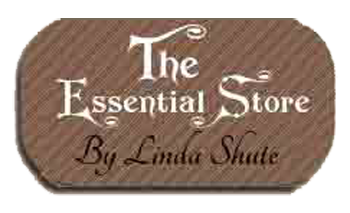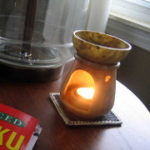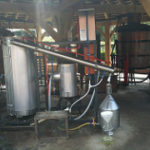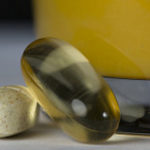Keep your Immune System Strong With Essential Oils
Most practitioners of aroma-therapeutics hold this opinion: THE most effective use of essential oils for health is for the prevention and treatment of infectious illness. Aromatherapy in the USA is still mostly relegated to New Age “hocus pocus”, and some pretty-smelling little bottles of liquid. However, in recent years scientific researchers have compiled HUGE amounts of data regarding the effectiveness of essential oils in combating bacterial and viral infections. The oils protect us from infection in a number of ways, and it’s very simple to use essential oils at home for their protective effects. Lets look at how to use essential oils for this purpose, and which oils to choose for best results.
Why Are Essential Oils Such Effective Antimicrobial Medicines?
An essential oil is simply a form of herbal medicine, like a tincture, extract or encapsulated herd concentrate. The incredible medicine found in essential oils stems from them being the primary immune defense for plants. Just like humans and other animals, plants also must defend themselves against bacteria and viruses. And it happens that essential oils are perfectly compatible with human physiology — they are easily and quickly absorbed, and destroy microbes in our bodies just as they would in plants. Further, they even enhance our cells in such a way as to make them more resistant to infection, and even make our immune cells more effective at removing foreign invaders — all from these great smelling natural plant extracts.
Scientific Support: Antibacterial, Antiviral and Immune-Supportive Effects
Scientific researchers have demonstrated antiviral, antibacterial and immune-system stimulating actions of a great many essential oils in laboratory settings. Essential oil of Oregano is one of the most effective antibacterials available, and can be ingested in small doses by humans for this effect because of its low toxicity (household bleach is an excellent antibacterial, but is highly poisonous!). Tea Tree essential oil was recently shown to destroy the H1N1 virus (Letters in Applied Microbiology, Sept. 2009); Bay Laurel has this effect against the virus SARS-CoV; MANY essential oils prevent the spread of, and heal infections from HSV-1 and HSV-2. Further, essential oils have demonstrated abilities to improve the function of our immune system: in the April 2008 issue of BMC Immunology, Eucalyptus essential oil was shown to significantly improve immune cell response, and this same essential oil is considered to have anti-viral action as well.
Using Essential Oils At Home and in Clinical Settings
Therapists recommend two methods of using essential oils for immune system support and protection from infectious illness: inhalation through diffusion, and topical application via massage and baths. Diffusion is a excellent means if using the oils in the workplace or other clinical settings, as the method is truly passive — just breathing the air imparts the therapeutic properties of the oils. All the methods discussed are also appropriate if one has already contracted an illness, and can be of greatest help in the first stages of infection.
Diffusing Essential Oils: Aromatherapist’s Favorite Immune Supporting Method
Diffusing essential oils into your environment provides three primary benefits: First, the oils are directly eliminating microbes in the air, thus reducing the concentration of live pathogens you may be inhaling or touching at any time and reducing the load on your immune system. Second, most essential oils, and particularly the strong anti-microbial ones, have an uplifting effect on the psyche. Many practitioners consider the mind-body link crucial to overall health, and specifically to an effective immune system. Finally, inhalation of essential oils is thought by aroma-therapy professionals to be THE most effective means of bolstering immune system function. Because the respiratory system is often the route of infection, inhalation is the best means to implement the cellular changes essential oils can create (one result of essential oil contact is a change in the electrical potential of cell walls, making it more difficult for pathogens to get inside the cells).
Nebulizing Diffusers: The Most Effective Style
One means to do both is using a professional-grade essential oil diffuser. For all these purposes, a high-quality nebulizing diffuser is the best choice, capable of making the highest concentration of essential oil in the air in your environment. Other diffusers will make a nice aroma for sure, but the cold-air (as opposed to ‘ultrasonic’) nebulizer will make a fine mist of pure essential oils, and is easily adjusted to suit the size of your environment. A nebulizer should only be used for a few minutes every hour; essential oils are very potent, and one should never feel overwhelmed by their aromas. By using a diffuser coupled with a timer, you can cycle the diffuser ON for 10 minutes, then OFF for 50 throughout the day and night. This method also conserves the oils to keep costs to a minimum.
Topical Application: Massages and Baths
Because essential oils pass readily through human tissue, topical application is also particularly effective. For this purpose, the essential oils are diluted in another oil like Sweet Almond, Jojoba, or Coconut (virgin Coconut oil is fast becoming popular for this particular therapeutic purpose, as it is considered to have antimicrobial actions even by itself — just warm until liquid to mix with essential oils). A 5{fa32f3da1db87532d93af57bebf07259016720c780c92cd8735931dd04d79e41} dilution of essential oils in the “carrier oil” is common for adults (this is 40 drops total essential oils per fluid ounce of carrier — we’ll look at some recipes in a moment). Use up to a 10{fa32f3da1db87532d93af57bebf07259016720c780c92cd8735931dd04d79e41} dilution if applying to the feet. For children, use only a 1-3{fa32f3da1db87532d93af57bebf07259016720c780c92cd8735931dd04d79e41} dilution (the lower dilutions for the younger ones). Do not use essential oils with infants unless you’re guided by a professional. A simple aroma-therapy bath can be had just by adding a tablespoon of your formula to a bath once its already drawn, swirling the oils into the water. A deep soak while the pores and sinuses are open is a time-honored treatment method.
Immune-Stimulation: The Critical Body Areas
Your oil blend can be massaged into regions of the body associated with the immune system: the lymph glands are near the surface in the front of the arm pits, on the sternum, and the sides of the neck. Some folks will massage the blends into their sinus areas and temples as well. Further, the tops and bottoms of the feet are very receptive to the actions of essential oils — by consulting a reflex point chart, you can even pinpoint spots associated with the respiratory and lymph systems. Regular, daily application to either the feet or lymph-node regions can be a highly effective means of gaining the immune-supportive benefits of oils when diffusion is not practical, such as when traveling.
Choosing The Essential Oils
The list of antimicrobial and immune-supportive oils is lengthy; here we’ll narrow it down as much as possible to those that are also highly regarded as specifically antiviral as well. Melissa — also called “lemon balm” may be the most versatile, all-around immune-supportive essential oil. It is well-known to make cells resistant to viral infection, and its aroma is one that has statistically significant antidepressant properties. It is thought to potentate the effects of other oils, and because of its very high potency, can be used in very small percentages in relation to other oils. Tea Tree is the most widely studied of the antibacterial and antiviral oils, and the only essential oil thus far shown to specifically eradicate H1N1 influenza. Bay Laurel — or “laurus nobilis” has been shown to have direct action against against a highly infectious virus causing severe respiratory ailments. Narrow-leaf Eucalyptus has both antiviral and proven immune-modulating actions. There are several other important oils worth mentioning: Lavender (great for children), Hyssop, Thyme, and Rosemary Verbenone.
Taking into account both the scientific research AND the safety of oils for use with all-ages, Bay Laurel, Eucalyptus Radiata, Tea Tree and Lavender may be the most effective, safe, and affordable oils available. These oils generally have pleasant aromas and are readily available. (Note: Tea Tree MUST be from a fresh, high quality source for a pleasing scent — otherwise its aroma can be so medicinal that you, and particularly your children, will avoid using it. If the aroma is not to your liking, try Rosalina, another highly-regarded antimicrobial Australian oil with a more pleasant scent). For diffuser use, try equal parts of these oils. For topical application, use 10 drops of each oil in Coconut oil (you can double the concentration for application to the feet) — this same mixture can be added to the bath. Again, for children, reduce the concentration appropriately for their age, and for diffuser use, there should only be enough aroma in the air so the scent can JUST be detected and no more.
Essential Oils: Simple Treatments for Maximum Health
During the cold seasons, these simple uses of essential oils can have profound results for your immune system, and the health of your friends, co-workers, clients, family and children. You can be confident of the scientifically-supported benefits of these wonderful herbal medicines. And as oils have so many positive health effects outside of just supporting immune system function, you’ll open the door to a new realm of natural health.









Leave a reply